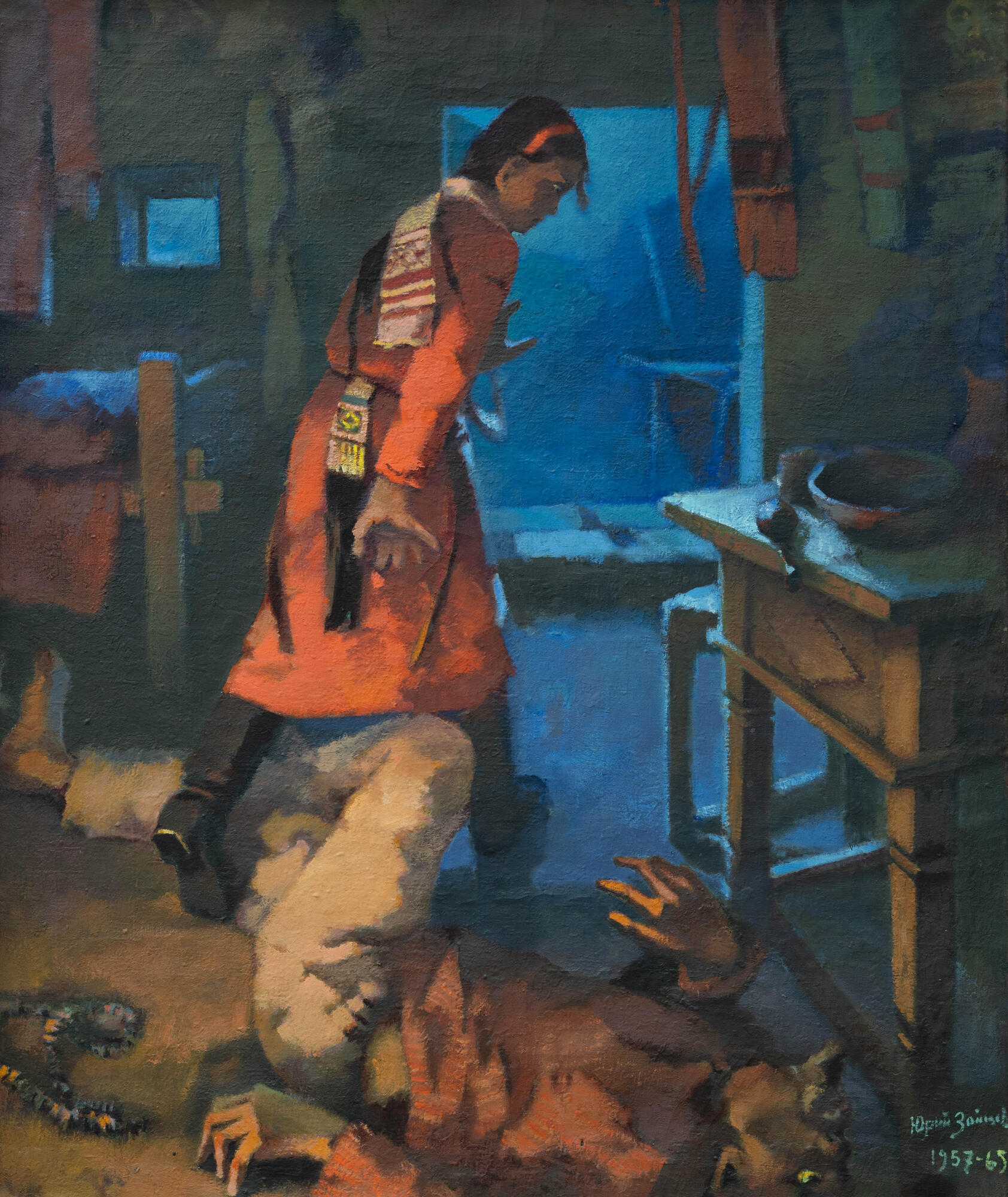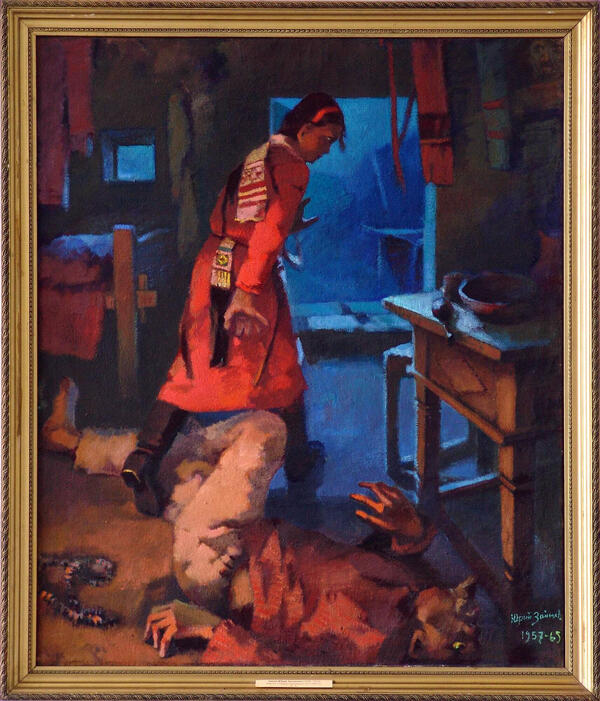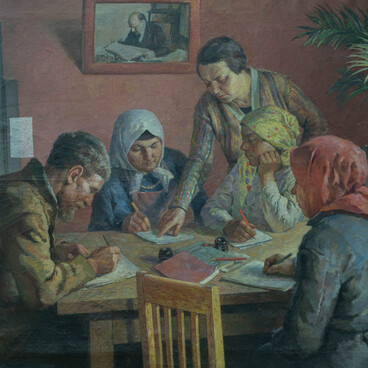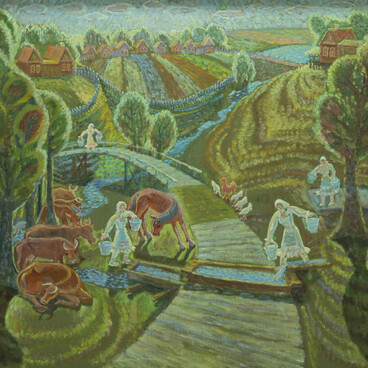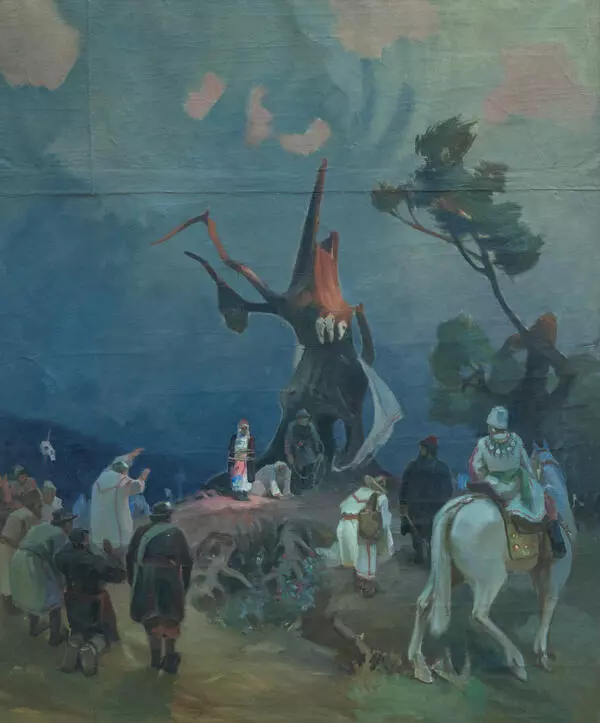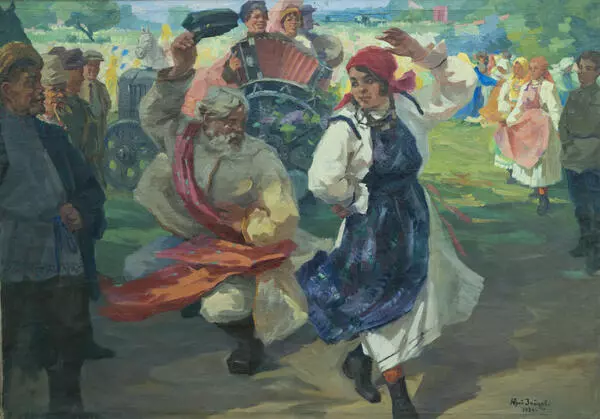The poem “Narspi” by Konstantin Vasilyevich Ivanov is widely recognized as the main, almost sacred text of Chuvash literature and culture. Throughout the 20th century, it fueled a variety of creative aspirations.
Konstantin Ivanov’s artistic vision was reflected both in the imagery and figurative expressiveness of the text of “Narspi”, where people live in harmony with nature, it is their cradle and home. Nature is not just a background: it is one of the main characters, which helps reveal the characters’ personalities.
The theme of Narspi began with the paintings of Konstantin Ivanov. The first Narspiniana paintings were displayed in 1940 at an exhibition, dedicated to the poet’s 50th anniversary. A few of the works were created by Yury Antonovich Zaytsev. Later, the painter presented a diptych called “During a Thunderstorm” and “The Death of Takhtaman”, in which he showed how life circumstances made a Chuvash girl overcome her fear of superstition and rebel against violence and injustice. The museum houses a sketch called “Narspi in the Forest”, which shows the heroine at the edge of a stormy forest, cursing all the powers of heaven and earth for taking her happiness away.
In the painting “The Death of Takhtaman”, Narspi is depicted as she steps over her dead old husband, who she has poisoned. She had to do this because of her life circumstances. Narspi’s parents married their young beautiful daughter off to an old rich man named Takhtaman. She was upset not only about the groom’s age: earlier, she fell in love for the first time with a poor fellow villager, young Setner. Out of jealousy, the brutal husband whipped Narspi every night. The endless beatings and insults force Narspi to commit a mortal sin — the murder of the hateful husband. The young wife adds poison to a tasty soup. Takhtaman, who returns in the evening from work in the field, does not suspect a thing and asks for a second helping, praising his wife’s skills. A few hours later, he dies.
The artist emphasizes the tension and drama of the plot through contrasting colors, as well as the character’s gestures and poses. A story with such a tragic plot cannot have a happy ending. After committing the crime, Narspi runs away to a forest on a gloomy stormy night. Setner finds her there, but their being together is not in the cards: when the young man goes to Narspi’s parents to ask for their blessing, their house is targeted by robbers, who kill all the three people inside. Narspi cannot stand the grief and takes her own life.
Konstantin Ivanov’s artistic vision was reflected both in the imagery and figurative expressiveness of the text of “Narspi”, where people live in harmony with nature, it is their cradle and home. Nature is not just a background: it is one of the main characters, which helps reveal the characters’ personalities.
The theme of Narspi began with the paintings of Konstantin Ivanov. The first Narspiniana paintings were displayed in 1940 at an exhibition, dedicated to the poet’s 50th anniversary. A few of the works were created by Yury Antonovich Zaytsev. Later, the painter presented a diptych called “During a Thunderstorm” and “The Death of Takhtaman”, in which he showed how life circumstances made a Chuvash girl overcome her fear of superstition and rebel against violence and injustice. The museum houses a sketch called “Narspi in the Forest”, which shows the heroine at the edge of a stormy forest, cursing all the powers of heaven and earth for taking her happiness away.
In the painting “The Death of Takhtaman”, Narspi is depicted as she steps over her dead old husband, who she has poisoned. She had to do this because of her life circumstances. Narspi’s parents married their young beautiful daughter off to an old rich man named Takhtaman. She was upset not only about the groom’s age: earlier, she fell in love for the first time with a poor fellow villager, young Setner. Out of jealousy, the brutal husband whipped Narspi every night. The endless beatings and insults force Narspi to commit a mortal sin — the murder of the hateful husband. The young wife adds poison to a tasty soup. Takhtaman, who returns in the evening from work in the field, does not suspect a thing and asks for a second helping, praising his wife’s skills. A few hours later, he dies.
The artist emphasizes the tension and drama of the plot through contrasting colors, as well as the character’s gestures and poses. A story with such a tragic plot cannot have a happy ending. After committing the crime, Narspi runs away to a forest on a gloomy stormy night. Setner finds her there, but their being together is not in the cards: when the young man goes to Narspi’s parents to ask for their blessing, their house is targeted by robbers, who kill all the three people inside. Narspi cannot stand the grief and takes her own life.
